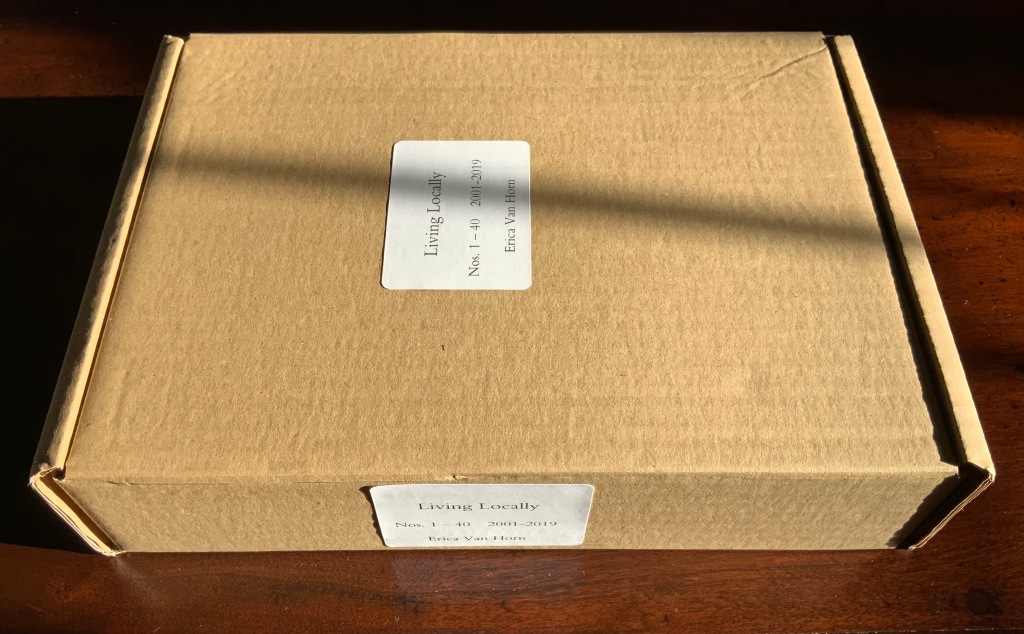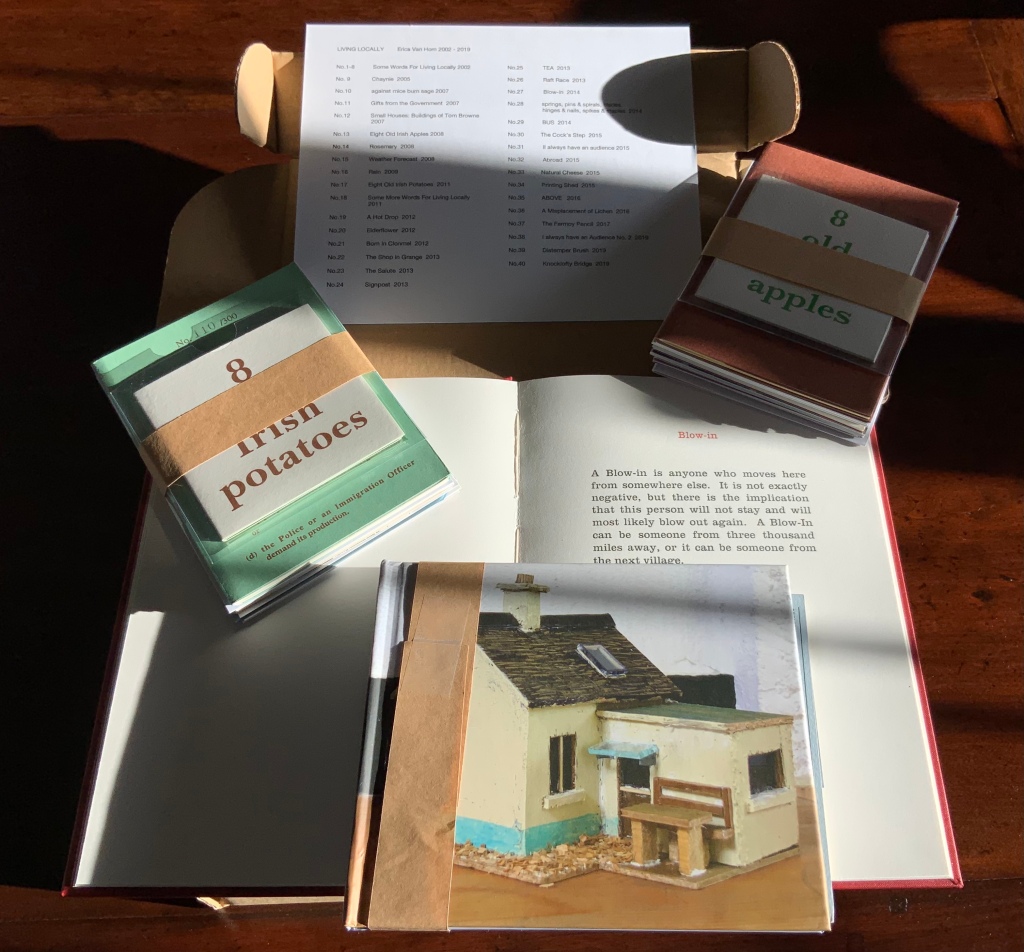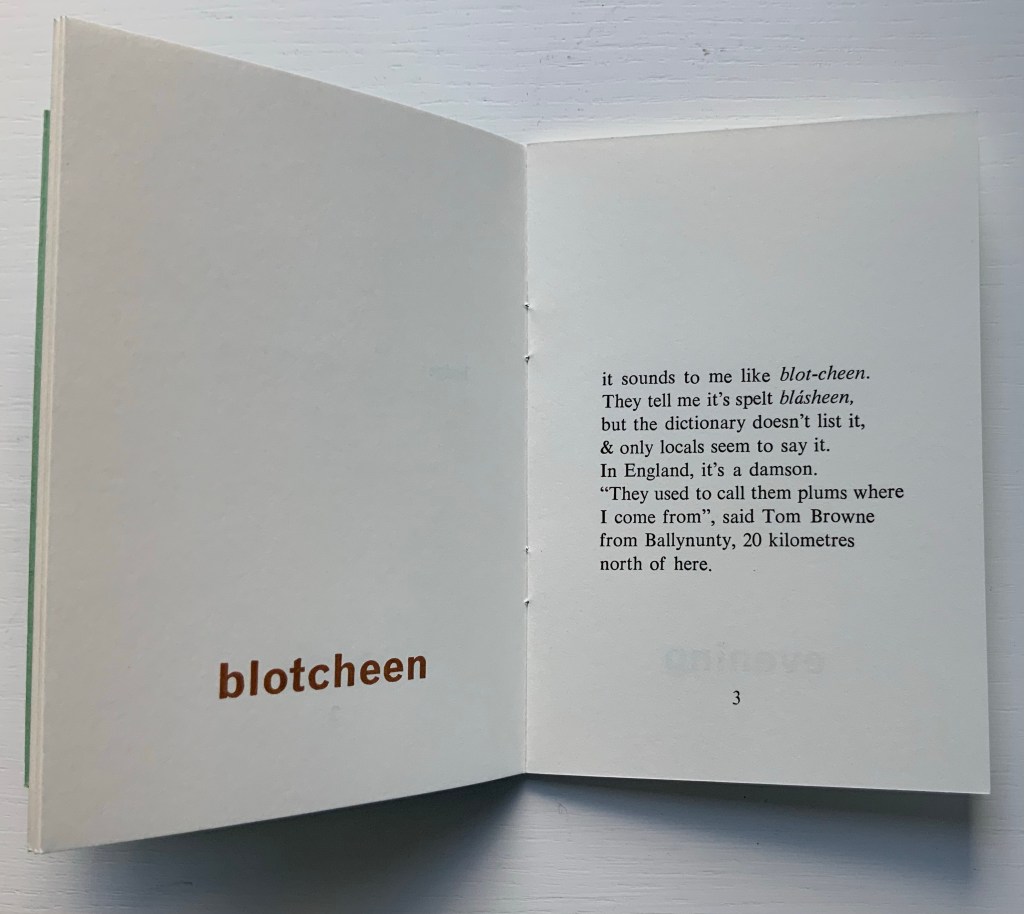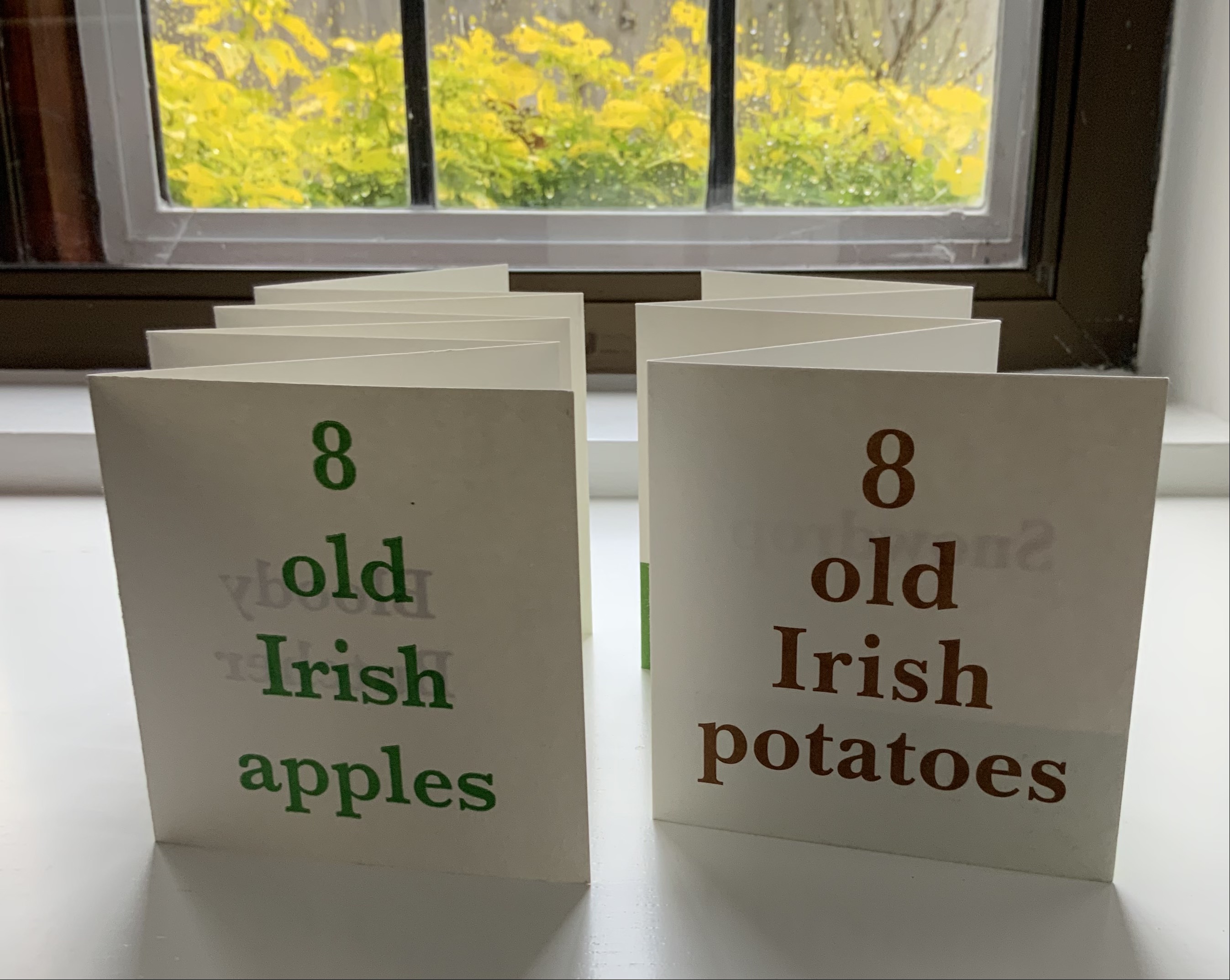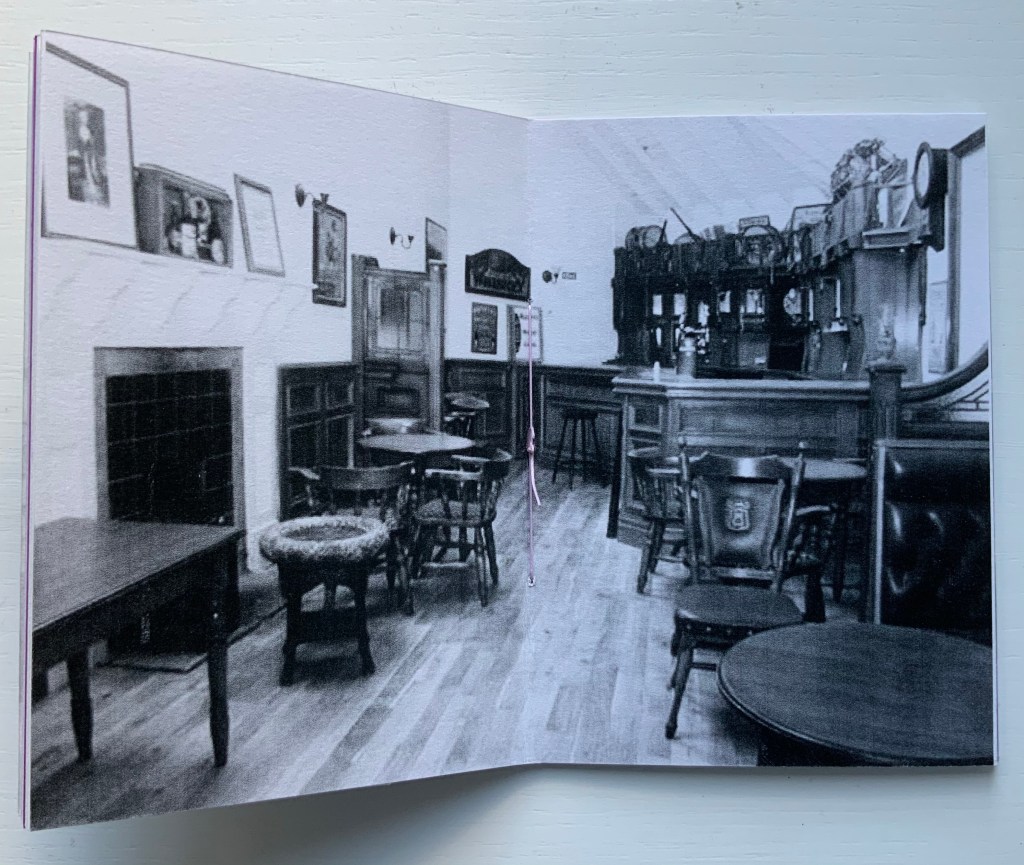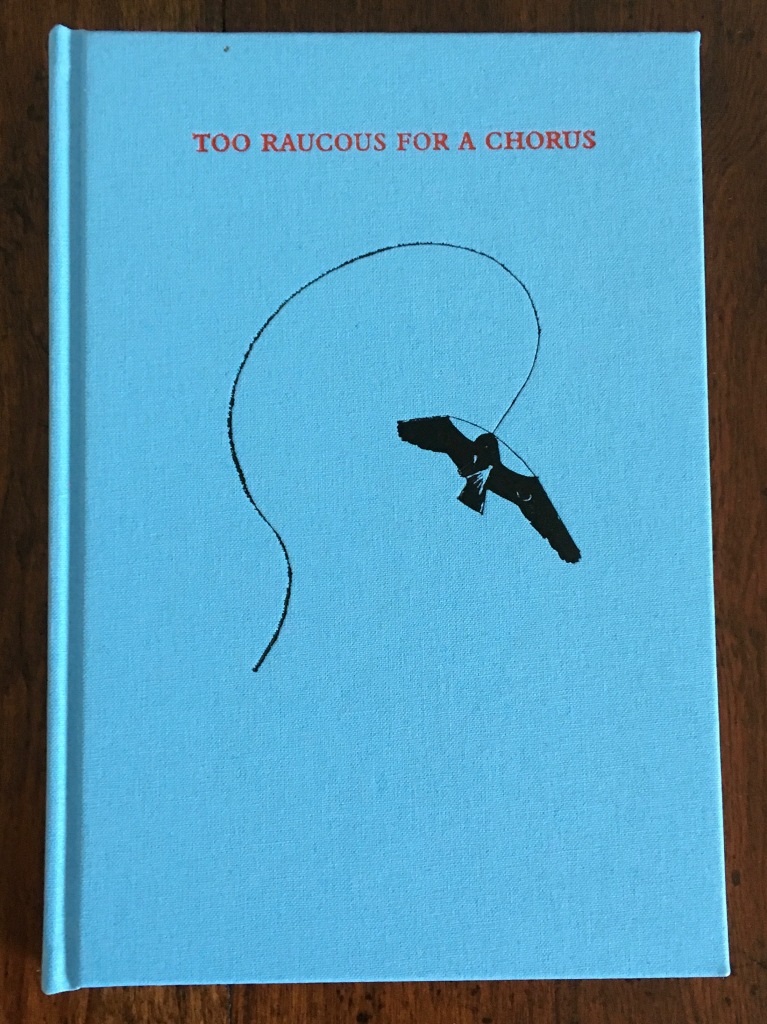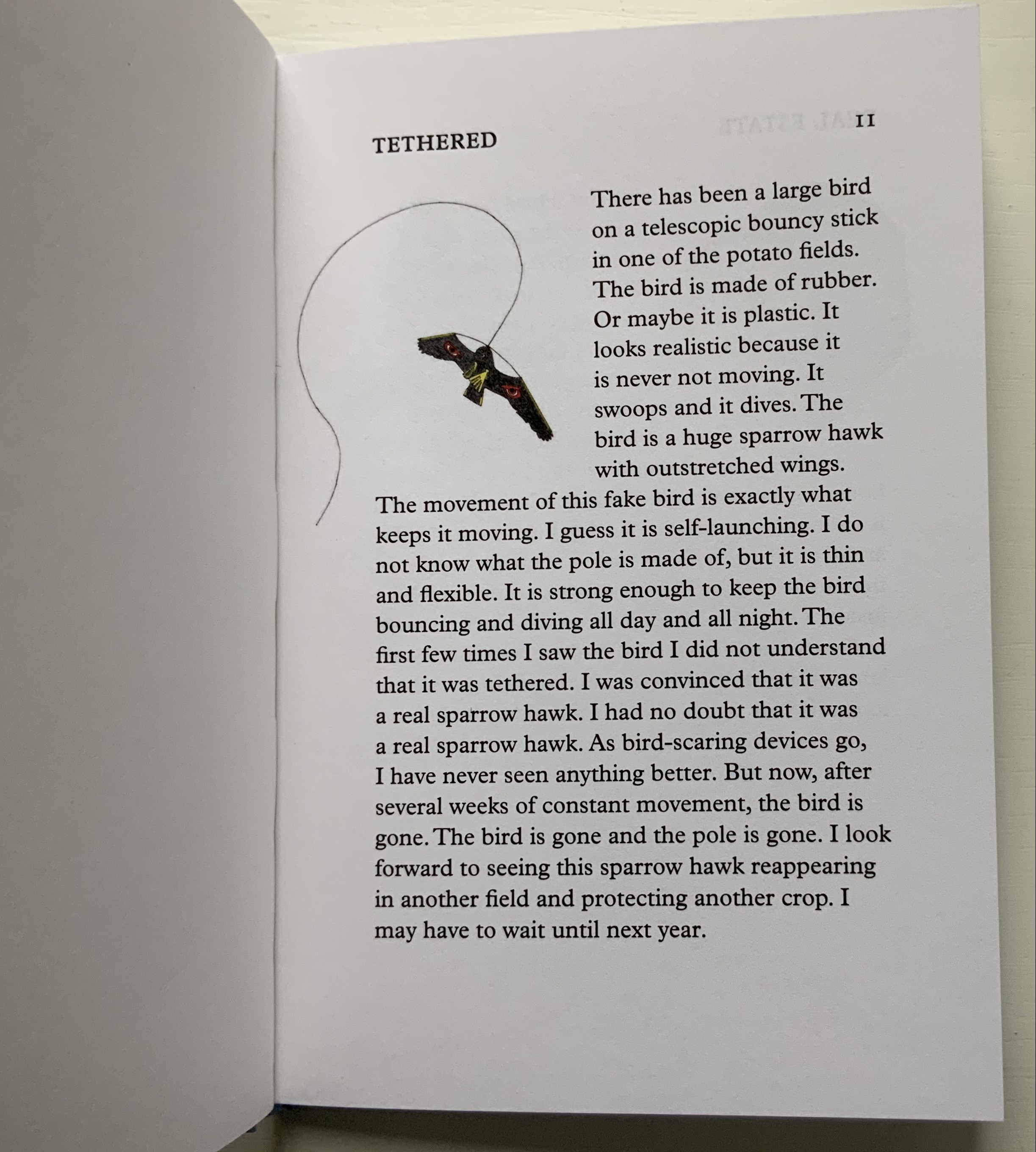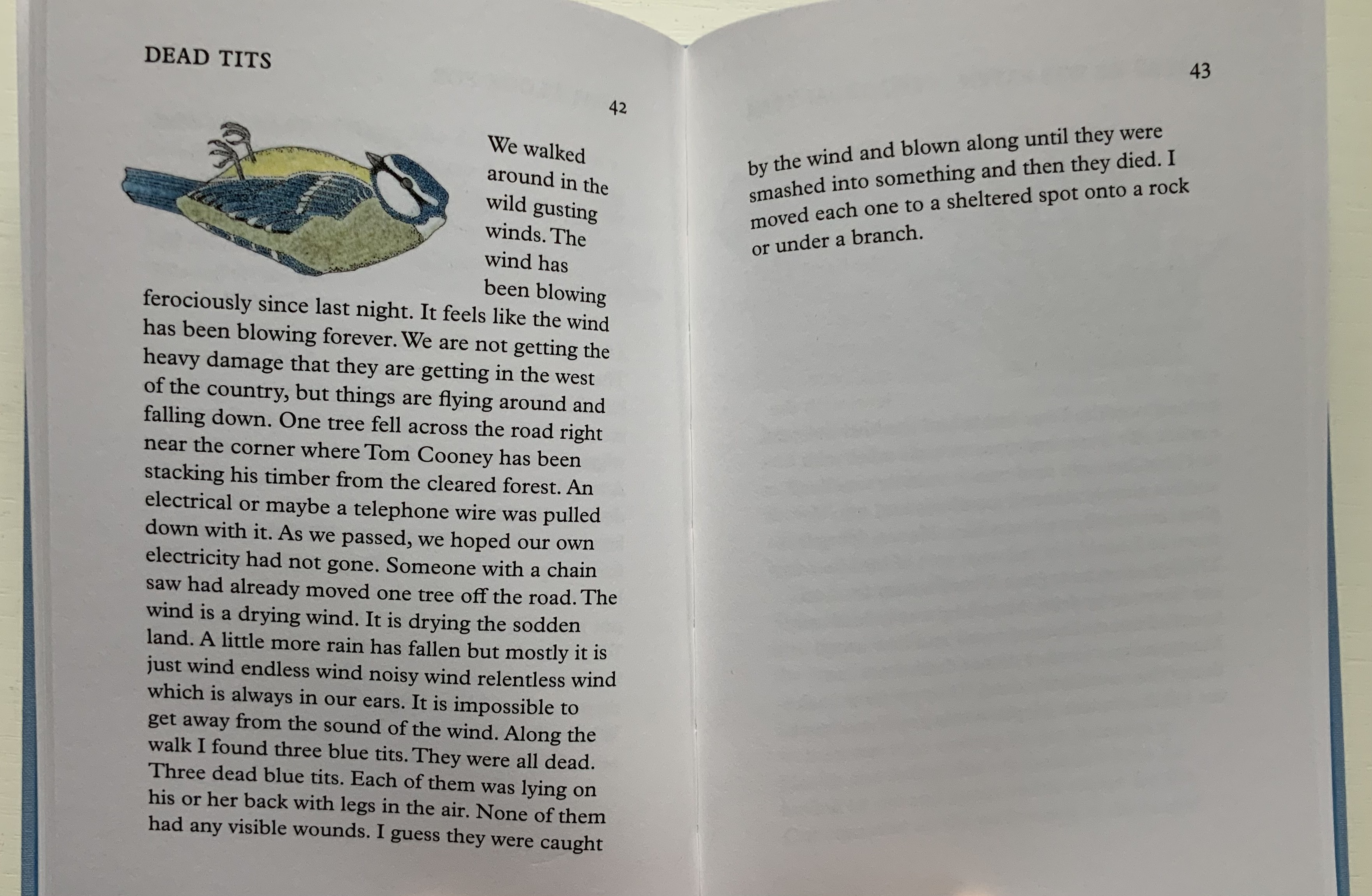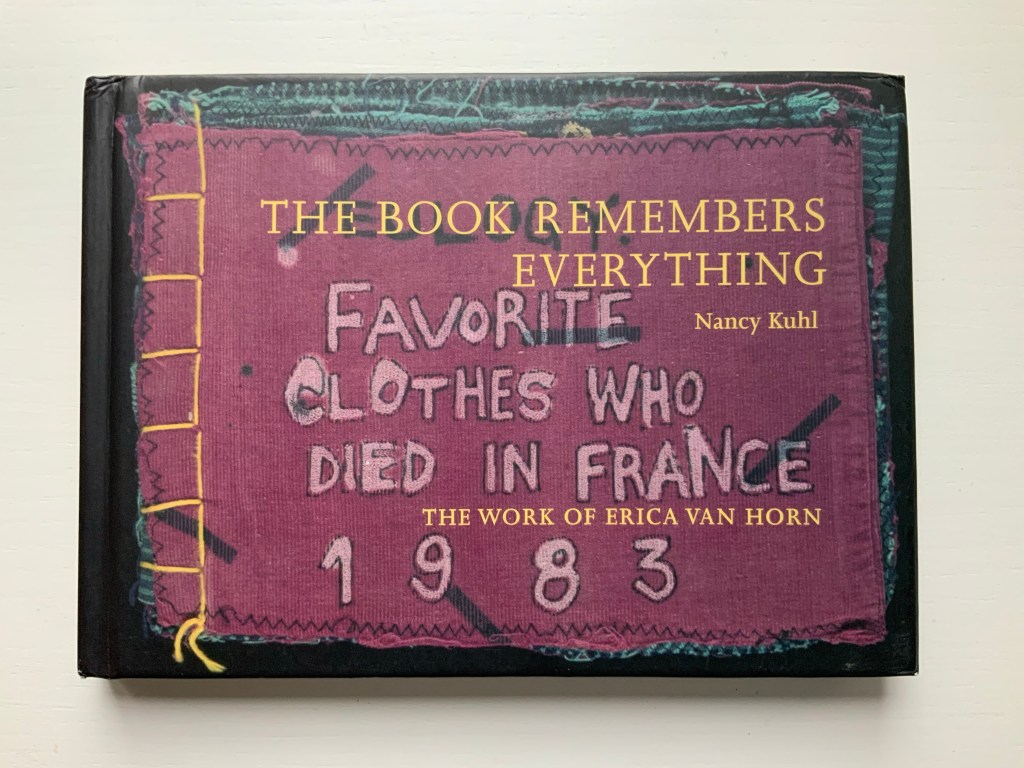The Black Page Catalogue (2010)
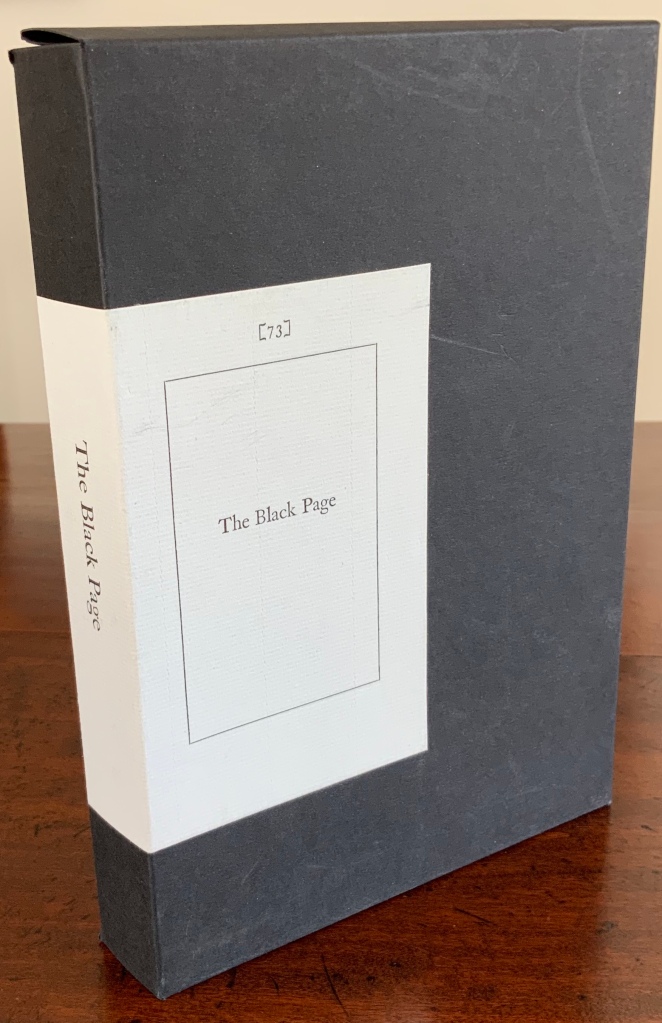
The Black Page Catalogue (2010)
Coxwold, UK: Printed by Graham Moss (Incline Press) for The Laurence Sterne Trust.
Contains 73 numbered leaves in a matte black card box (H235 x W168 mm). The leaves are glossy cards (210 x 148 mm) on which contributed texts and illustrations (chiefly colour) are printed; the reverse of each provides the contributor’s comments on the text or illustration and the “page” number. Also enclosed are a single-sheet folded pamphlet (“Printing the Black Page” by Graham Moss, Incline Press) and two cards, one of which is the invitation to the exhibition inspired by the ‘black page’, p. 73 of the first edition of The Life and Opinions of Tristram Shandy, Gentleman, held at Shandy Hall, Coxwold, North Yorkshire, 5 Sept.-31 Oct. 2009, and the other, sealed in an envelope, being the index of the contributors and their page numbers. Edition of 73. Acquired from the Trust. Photos: Books On Books Collection.
Collectors come up with the most ingenious reasons for acquiring things. In this case — along with astrological, numerological and other rational rationale — Rebecca Romney’s reminder that The Life and Opinions of Tristram Shandy, Gentleman is one of the earlier instances of book art led inevitably to my acquiring Shandy Hall’s The Black Page Catalogue. But it took time.
Several months after enjoying the Romney essay, I met Brian Dettmer in February 2015 by happenstance at a book art exhibition in New Haven, CT. As we chatted about past inspirations of book art, Tristram Shandy came up, so he told me of an upcoming event called “Turn the Page” in Norwich, UK, where I could more easily see some of his work — and one in particular having to do with Tristram Shandy. So in May 2015, I went.

Tristram Shandy (2014)
Brian Dettmer
Carved and varnished, two copies of the 2005 Folio Society edition of Tristram Shandy.
H230 x W190 mm
Commissioned by The Laurence Sterne Trust, Coxwold, UK. Photos: Books On Books Collection.



The marbled page, an “emblem of my work”, p. 169.
The Life and Opinions of Tristram Shandy, Gentleman (1759) by Laurence Sterne
Illustrated with wood engravings by John Lawrence. Set in ‘Monotype’ Plantin, printed by Cambridge University Press on Caxton Wove Paper.
New York: Folio Society, 2005.
So a year passed. Another visit to “Turn the Page” was made. And as I was leaving, lo, a sign and small display came unto me:

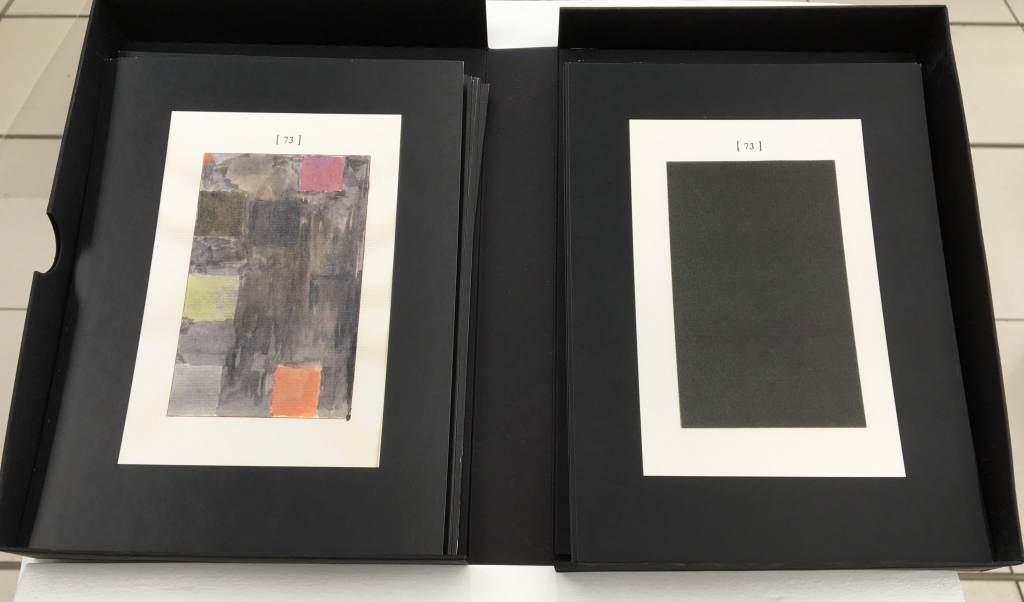
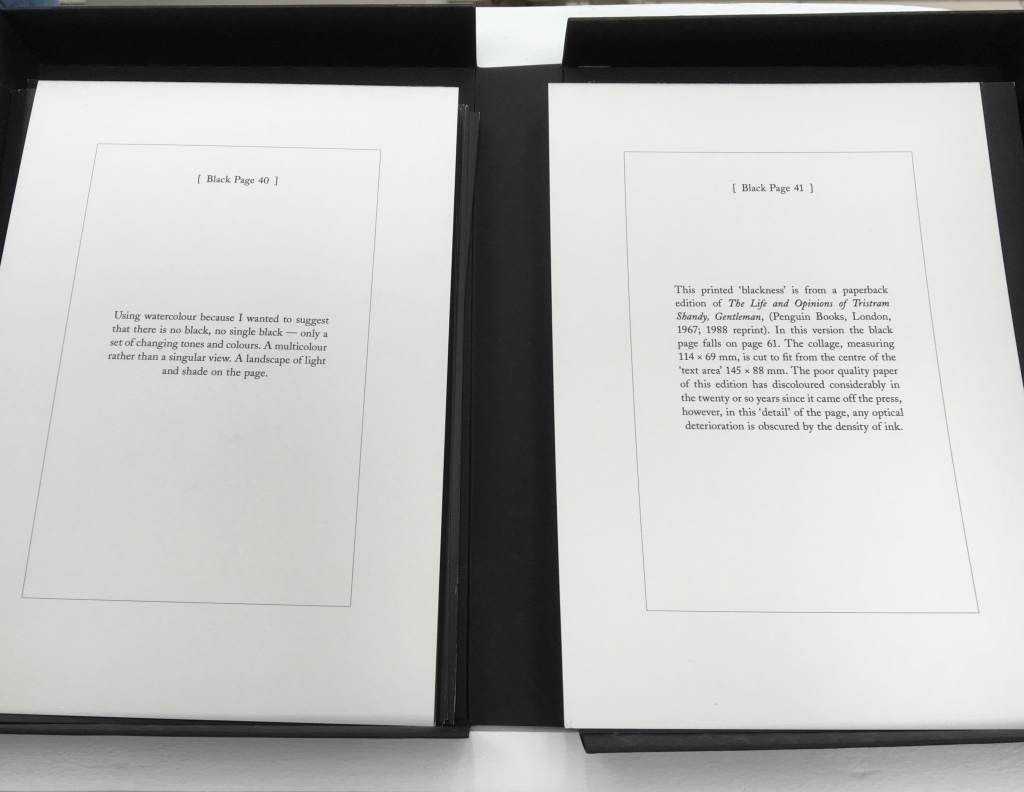
Only a negligent collector would ignore such clear signs.

Ten favourites because 10 = 7 + 3.
Clockwise from the top: Craig Vear, Simon Morris, Tom Phillips, Colin See-Paynton, Coracle Press, Scott Myles, Helen Douglas, Graham Swift, Yasunao Tone, Harrison Birtwistle.
Parson-Yoricks-to-be can select their own favorites here.
Emblem of My Work (2013)
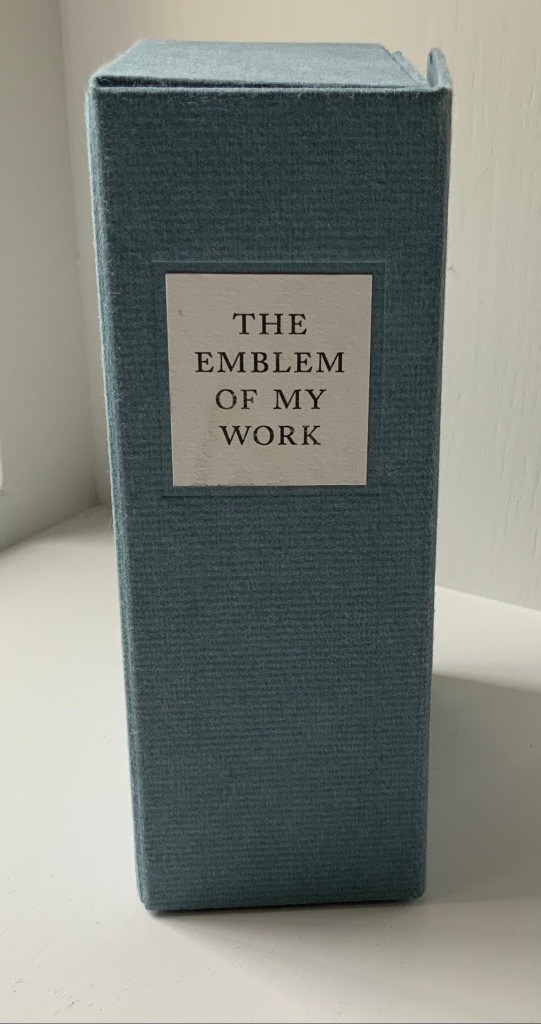
Emblem of My Work (2013)
Coxwold, UK: The Laurence Sterne Trust.
Consists of a 24-page booklet and 170 numbered cards in a hinged blue paper-covered box (H160 x W105 x D60 mm. The leaves of this catalogue are bright white cards (152 x 92 mm) on which the artwork is printed; the reverse of each provides the “page” number and the contributor’s comments on the art. The booklet provides alphabetical and numerically ordered indexes listing the contributors and their page numbers. Edition of 225, of which this is #79. Acquired from Shandy Hall, 1 October 2019. Photos: Books On Books Collection.
Volume III of Sterne’s work was the first to be handled by a publisher. Presumably the famous success of the first two self-published volumes helps to explain James Dodsley’s agreement to printing copies in which each page 169 and each page 170 showed uniquely marbled squares. Images from an original copy held at the British Library can be seen here. As Patrick Wildgust, director of Shandy Hall, explains in the booklet:
The central section of p. 169 was laid upon the marbled mixture in order that a coloured impression could be taken as cleanly as possible. This was left to dry and then reverse-folded so the other side of the paper could also receive its marbled impression. This side of the paper became page [170]. As a result, the marbled page in every copy of Vol. III is different — each impression being a unique handmade image. In the text opposite on p. 168, Sterne tells the reader that the marbled page is the “motly emblem of my work” — the page communicating visually that his work is endlessly variable, endlessly open to chance.
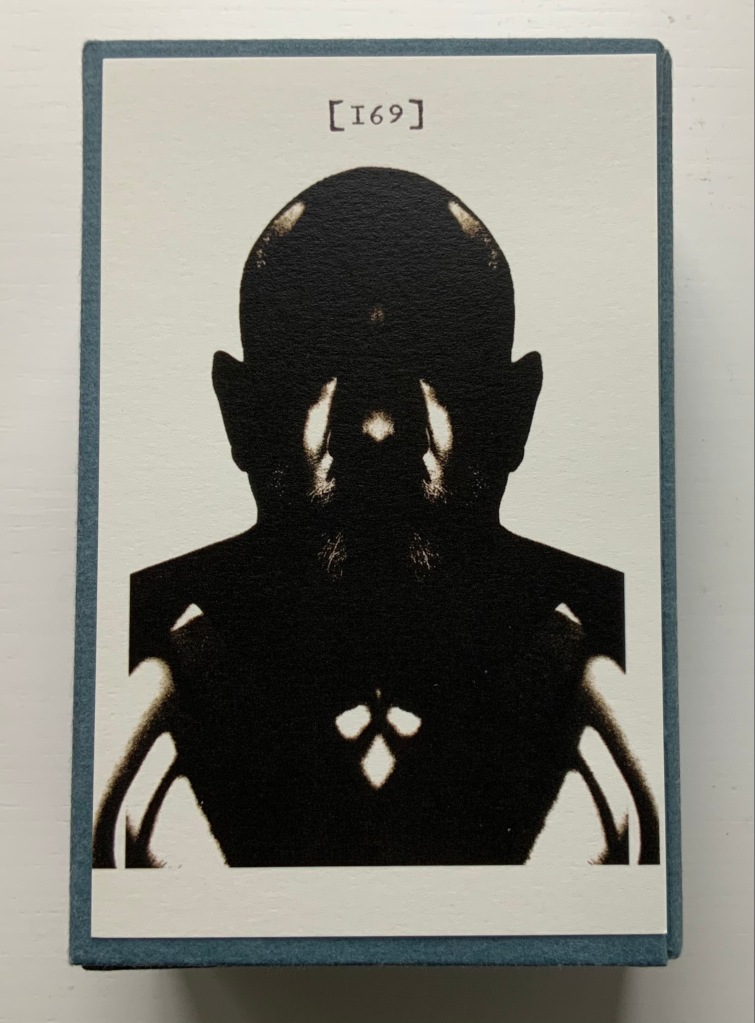

Two favorites — one for page [169], one for [170] — artists with other works in the Books On Books Collection. Left: Ken Campbell. Right: Eric Zboya.
All of the motley crew can be viewed here.
Paint Her To Your Own Mind (2018)

Paint Her To Your Own Mind (2018)
Coxwold, UK: The Laurence Sterne Trust.
Contains 147 numbered leaves in a brown paper-covered box (174 x 124 mm). The leaves are bright white cards (145 x 105 mm) on which contributed texts and illustrations (chiefly colour) are printed; the reverse of each provides the contributor’s comments on the text or illustration and the “page” number. Also enclosed are a “title page” and “index leaf” listing the contributors and their page numbers. Edition of 200. Acquired from Shady Hall, 6 June 2018. Photos: Books On Books Collection.
Page 147 of Sterne’s sixth volume of Tristram Shandy is blank. On the preceding page, he metaphorically throws up his hands over any attempt to describe the most beautiful woman who has ever existed and exhorts the reader: “To conceive this right, —call for pen and ink—here’s paper ready to your hand, —Sit down, Sir, paint her to your own mind—as like your mistress as you can—as unlike your wife as your conscience will let you—‘tis all one to me—please your own fancy in it.” So, accordingly, Shandy Hall invited 147 artists/writers/composers to follow Sterne’s instruction to fill the blank page 147. From the 9th through 30th of September 2016, their efforts were displayed in the Shandy Hall Gallery, Coxwold, York.

Twelve favourites because 12 = 1 + 4 + 7.
Clockwise from the top: Christian Bök, Simon Morris, Colin Sackett, Nancy Campbell, Colin See-Paynton, Derek Beaulieu, Erica Van Horn, Simon Cutts, Jérémie Bennequin, Helen Douglas, Brian Dettmer, Chris McCabe.
The curious reader can choose his or her own favorites here.
The Flourish of Liberty (2019)
In Volume IX on p. 17, the reader reads Corporal Trim’s advice to Uncle Toby, who stands at the Widow Wadman’s threshold about to propose marriage:
Nothing, continued the Corporal, can be so sad as confinement for life — or so sweet, an’ please your honour, as liberty. Nothing, Trim — said my Uncle Toby, musing — Whil’st a man is free — cried the corporal, giving a flourish with his stick thus —

The Flourish of Liberty (2019)
Coxwold, UK: The Laurence Sterne Trust.
Contains 103 numbered leaves in a gray paper-covered box (174 x 124 mm). The leaves are bright white cards (148 x 105 mm) on which contributed texts and illustrations (black and white, several in colour) are printed; the reverse of each provides the contributor’s comments on the text or illustration and the “page” number. Also enclosed are a “title page” and “index leaf” listing the contributors and their page numbers. Edition of 150, of which this is #133. Acquired from Shandy Hall, 26 October 2020. Photos: Books On Books Collection.
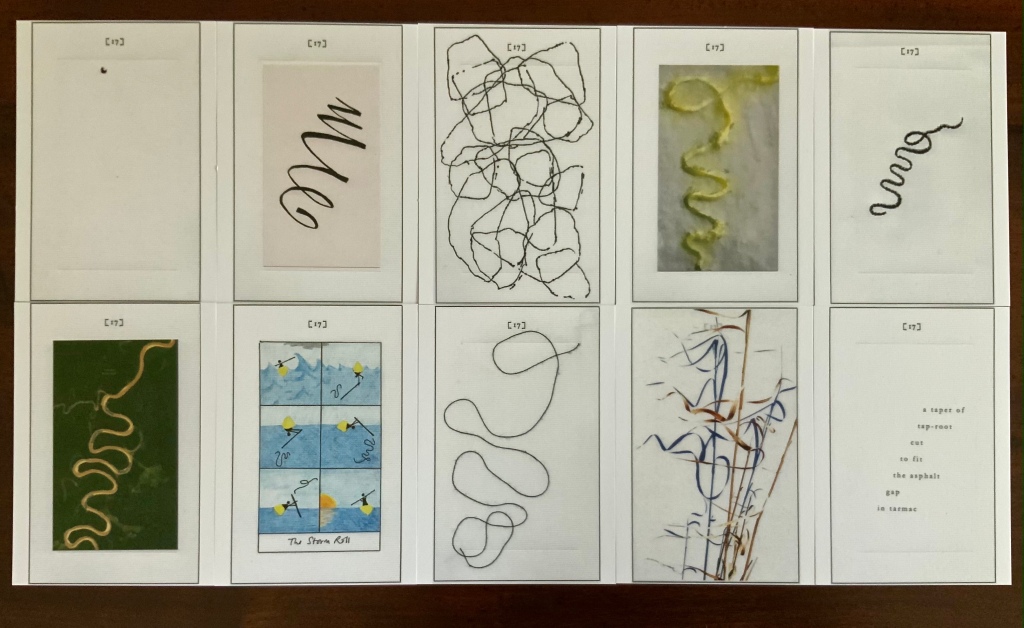
Clockwise from the top: Nick Thurston and Sarah Auld, Erica Van Horn, Derek Beaulieu, Simon Morris, Francesca Capone, Simon Cutts, Helen Douglas, Jérémie Bennequin, Nancy Campbell, Craig Dworkin
The rest of Corporal Trim’s flourishes flourish here.
Endless Journey (2015)
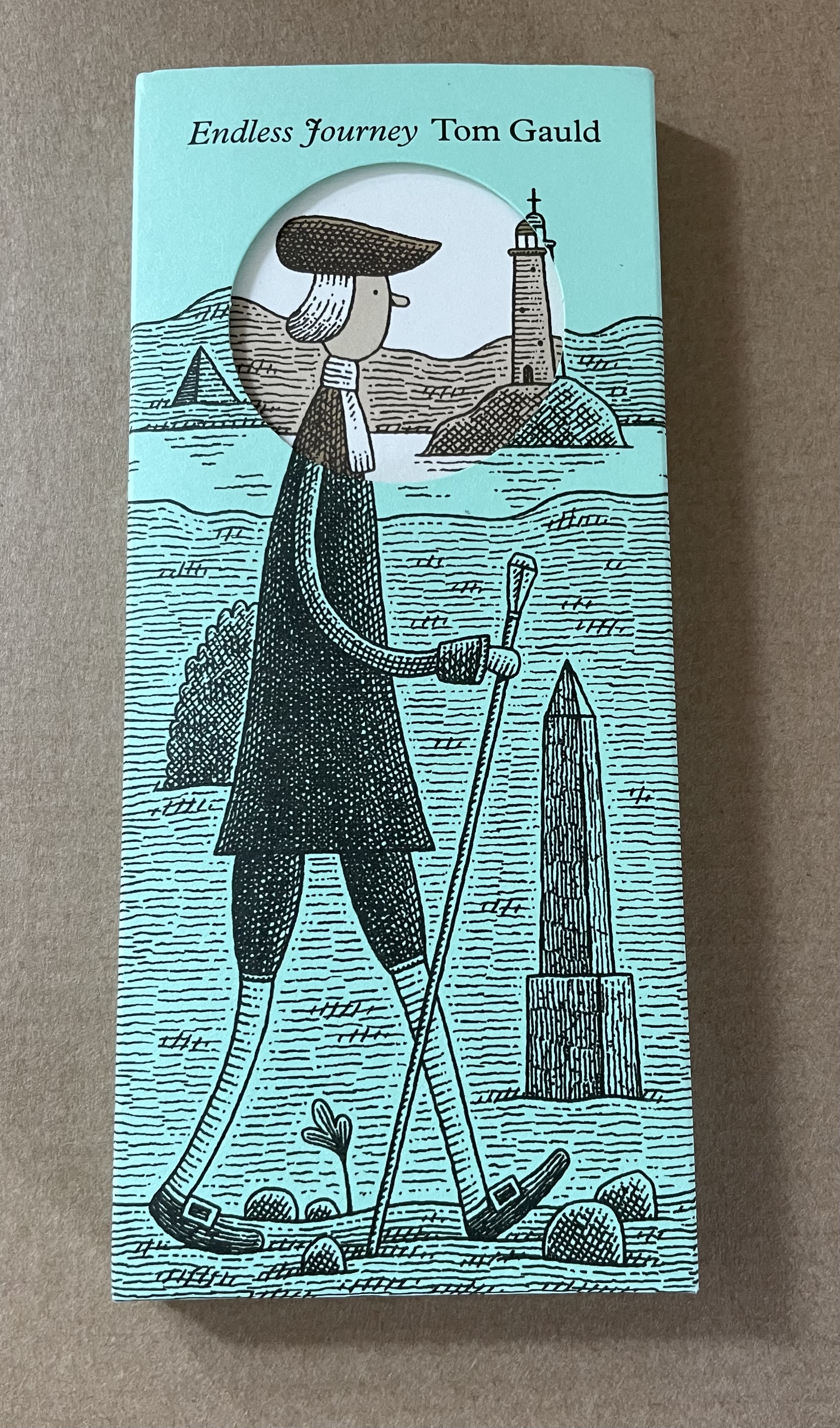
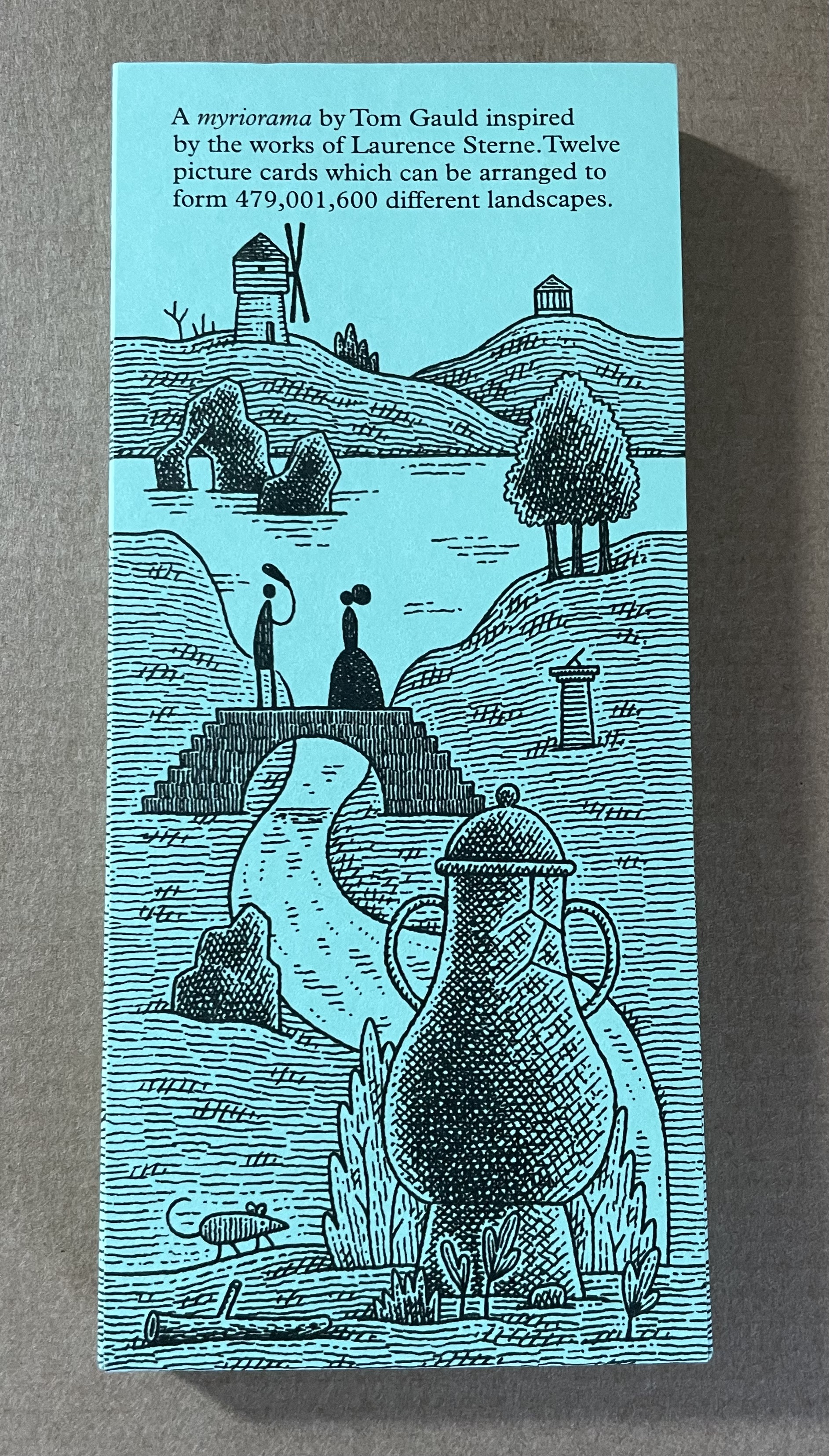
Endless Journey (2015)
Tom Gauld
Printed slipcase, twelve cards, leaflet. H165 x W73 mm. Acquired from the Laurence Sterne Trust.
Photos: Books On Books Collection.

Further Reading
Ancliffe, Abra. The Secret Astronomy of Tristram Shandy (Portland, OR: self-published, 2015).
Drucker, Johanna. The Century of Artists’ Books (New York: Granary Books, 1995), pp. 33 and 162.
Lazda, Gayle. “A lot of Shandy”, London Review Bookshop, 14 January 2016. Accessed 18 September 2019.
Mullan, John. “The ‘stuff’ of Tristram Shandy”, British Library, 21 June 2018. Accessed 18 September 2019.
A Practice for Everyday Life. “The Life and Opinions of Tristram Shandy, Gentleman”, Reading Design, 2011. Accessed 18 September 2019.
Romney, Rebecca. “Sterne’s Tristram Shandy and Materials as Meaning“, 15 July 2014. Accessed 23 August 2014.
